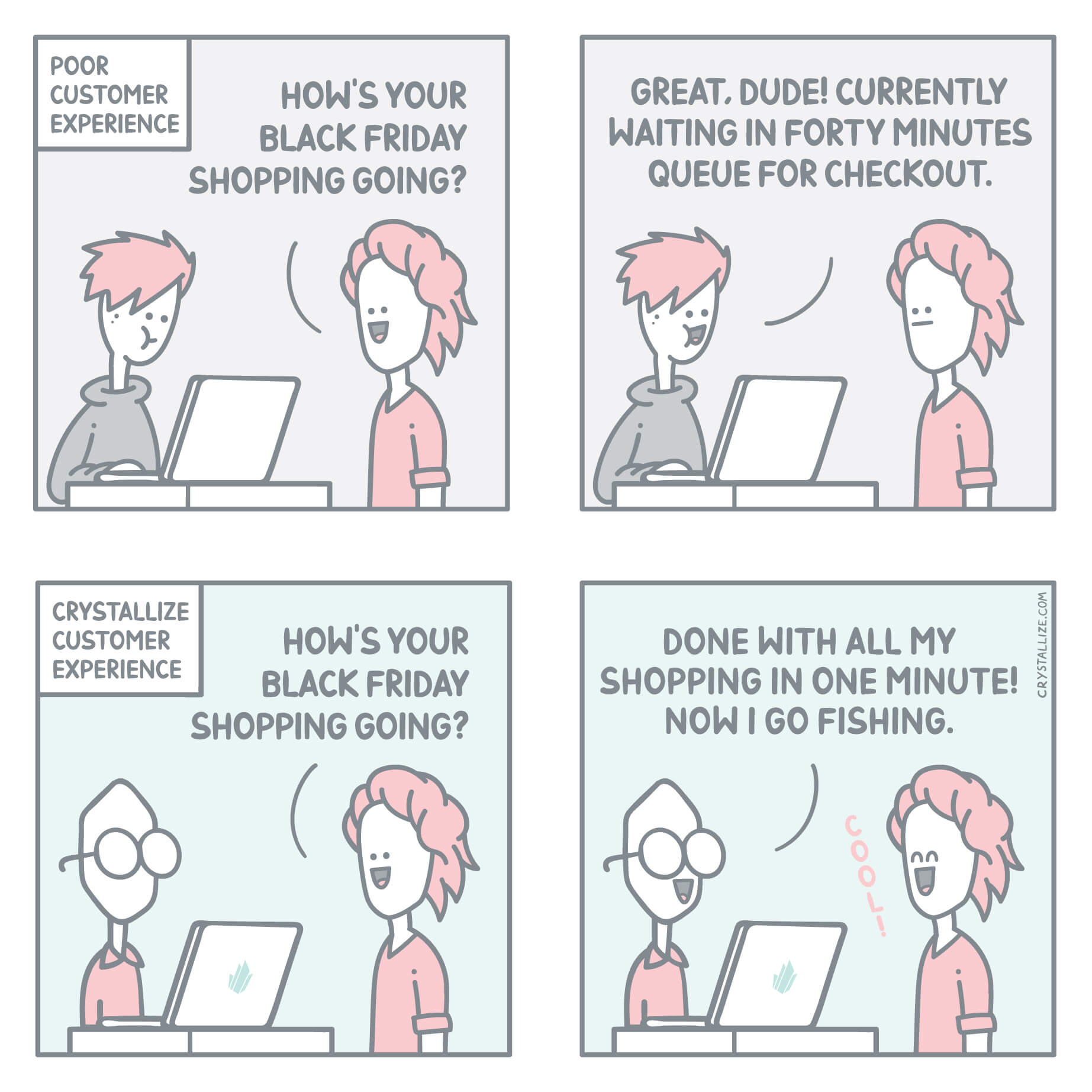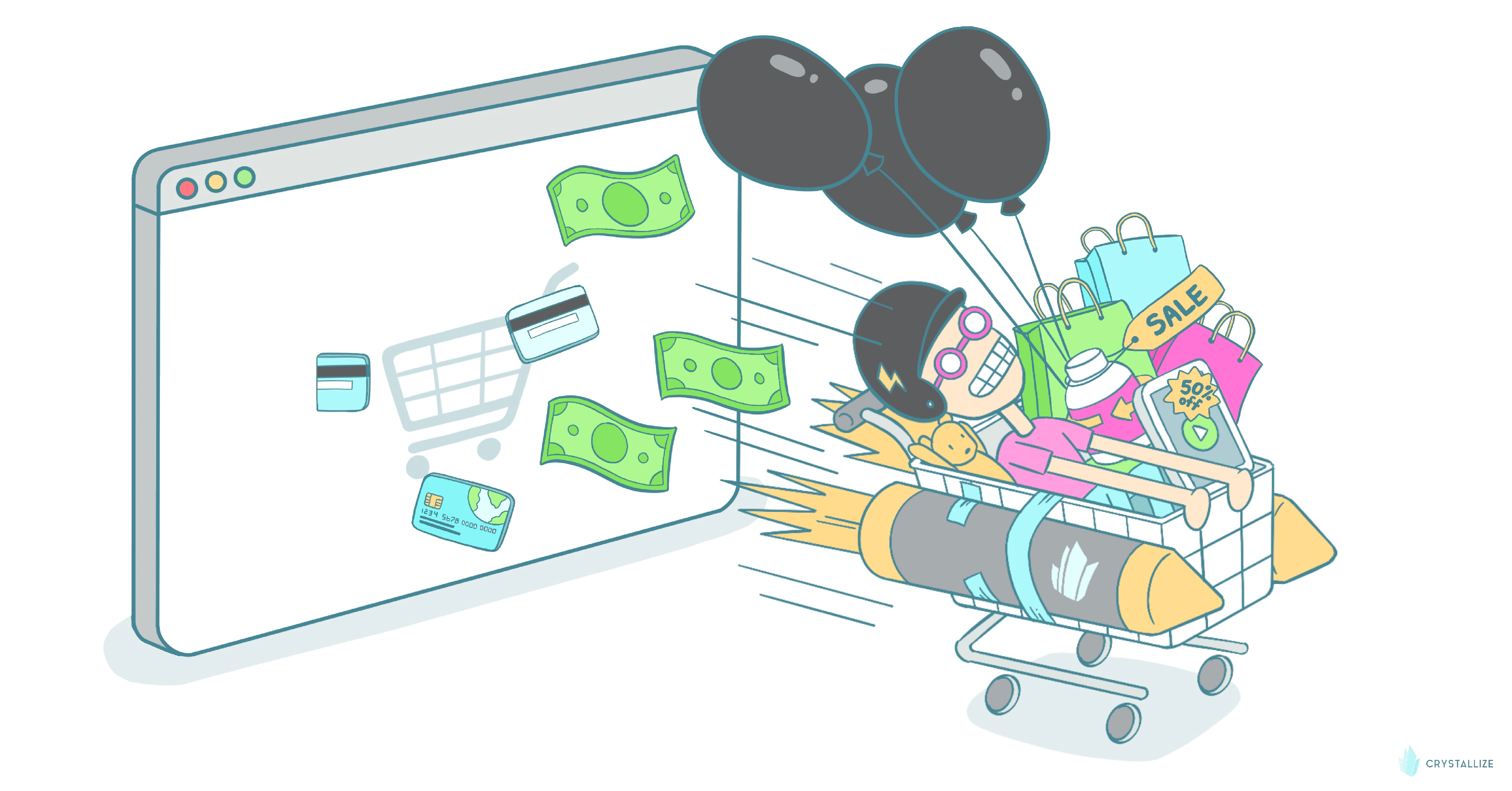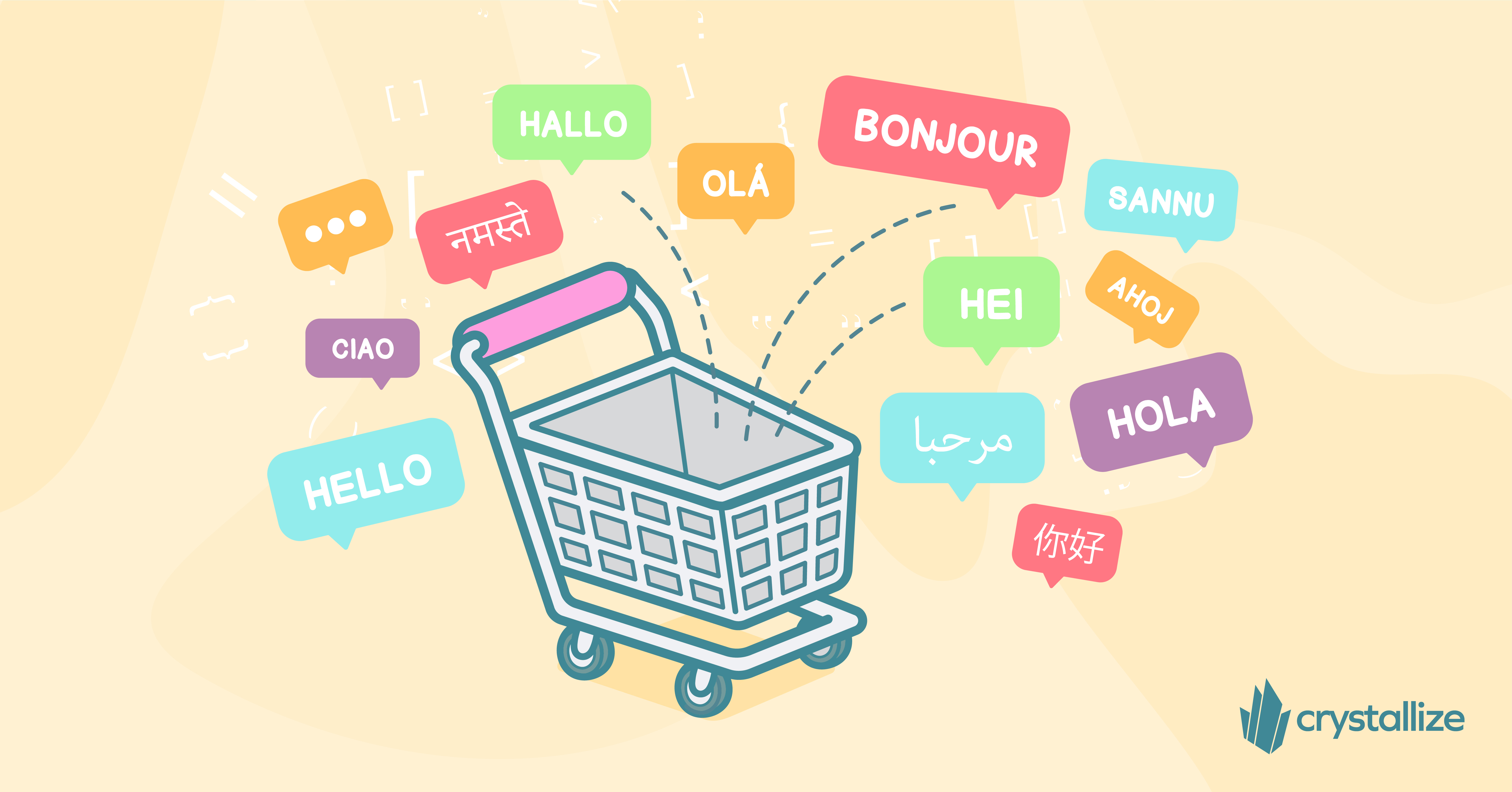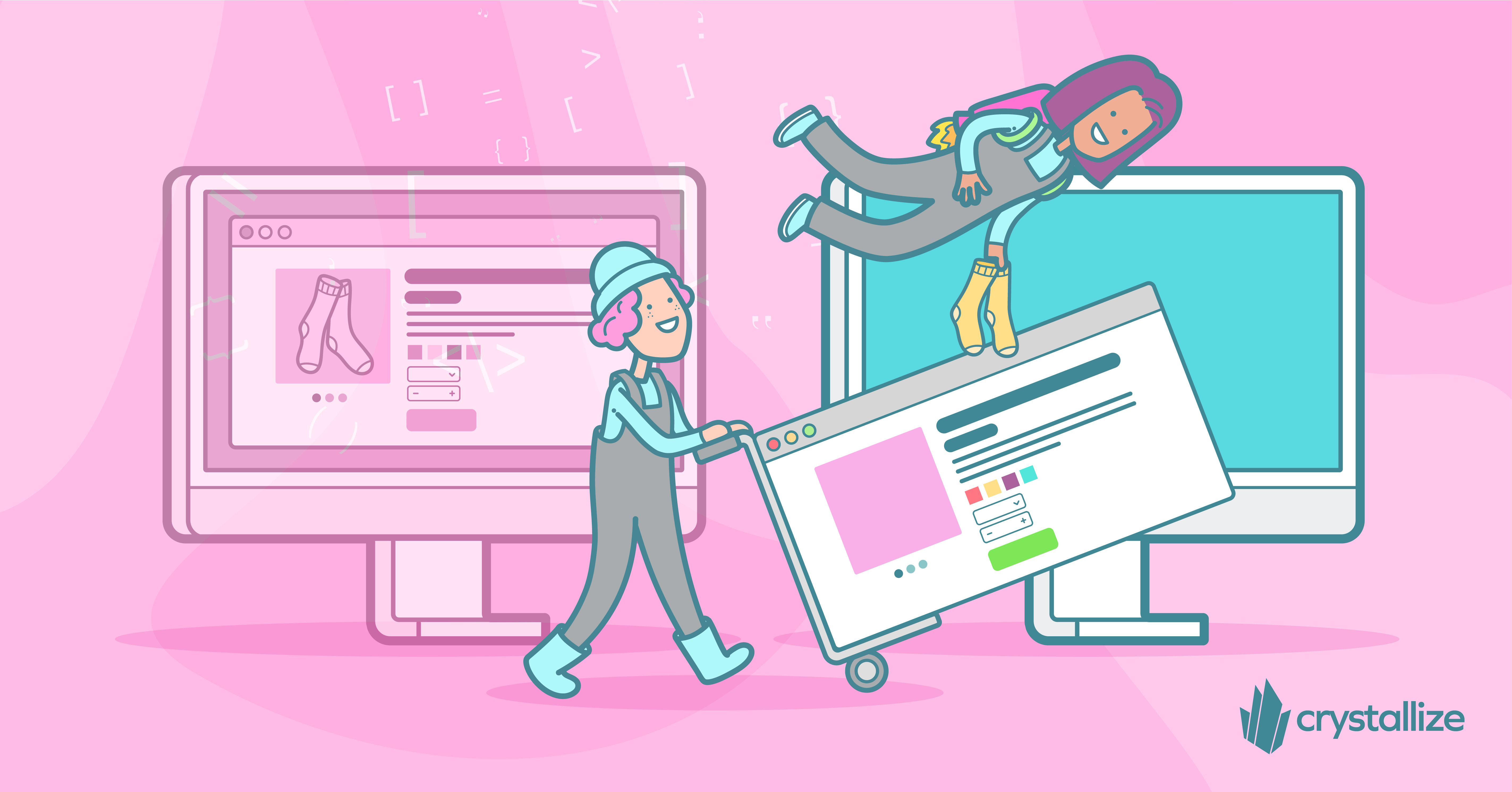Using Video to Turbocharge Black Friday Sales and Subscription Growth: How to Stand Out in the eCommerce Frenzy?
Black Friday and Cyber Monday have always been about more than just boosting sales—they’re about creating lasting customer relationships. The best way to do this? Videos. Let me explain.

Black Friday was the most popular day for online shopping in 2023, with 90.6 million U.S. consumers shopping, up 3.9% from 87.2 million in 2022 (Europe is catching up fast),
The sheer competitiveness of the day makes standing out a challenge. One can't help but wonder how to stand out from the crowd. Well…with videos.
Video allows brands to create highly engaging and personalized experiences that resonate beyond Black Friday and Cyber Monday (BFCM), converting one-time buyers into loyal subscribers. This approach is particularly powerful for businesses that rely on subscription models, such as subscription boxes, SaaS platforms and tools, or membership-driven services.
By effectively leveraging video, brands can thrive during peak shopping seasons and foster long-term customer retention and steady revenue growth through subscriptions. If you know and do this… well, good for you.
If not, I guess you’re now wondering how exactly you can do that.
Drive Fast Decisions with Product Demo Videos Featuring Subscription Options
Decision time is short on BFCM, and customers must feel confident in their choices. Video demos help clarify product details quickly and clearly. Pairing these demos with subscription-based options can encourage customers to think long-term, even during a one-day shopping spree.
Example. If you’re selling tech products or specialized items, create video demos highlighting the product’s features and the added value of a subscription plan. For example, an online fitness platform/app could demonstrate how their equipment works while also promoting a subscription to exclusive workout content. By showcasing the product alongside its subscription service, you close the deal on the product itself and hook customers into a recurring relationship.

Use Urgency-Driven Videos to Promote Limited-Time Subscription Deals
Urgency is a classic Black Friday/Cyber Monday tactic but becomes even more powerful when combined with video and subscription offerings. Videos featuring countdowns and limited-time subscription deals can create FOMO (Fear of Missing Out) while pushing customers to make quick decisions.
Example. Create urgency-focused videos highlighting the benefits of signing up for your subscription service during BFCM. Show countdown timers, exclusive first-month discounts, or limited-time bonuses for subscribers who join on Black Friday.
Subscription-based services like Netflix or Hulu have used this tactic, often offering special Black Friday deals for new subscribers. A dynamic video showcasing these limited offers, combined with the ticking clock, can convert curious shoppers into long-term subscribers.
Performance Matters
It’s not just about the video OFC. Your product/ service comes first, but having a performant website on BFCM ensures you capitalize on the high traffic and convert visitors into buyers.
Black Friday and Cyber Monday are notorious for massive traffic spikes, as millions of shoppers flood eCommerce websites looking for deals. If your website can't handle the surge in traffic, it could crash or slow down, leading to poor user experiences. Even a few seconds of delay can cause impatient customers to abandon their carts and head to competitors. More than 10 years ago, Amazon found that every 100ms of latency cost them 1% in sales (source).
Basically, by tackling performance beforehand, you prevent potential revenue loss from slow load times or outages, improve user experience and conversions, reduce cart abandonment, and protect your brand’s reputation. In short, optimizing your website’s performance for events such as Black Friday is an investment that will pay dividends in terms of sales, customer satisfaction, and long-term loyalty.
Black Friday eCommerce should not mean waiting in line, right?
👇Source: Online shopping Experience Crystallize WebDev Comics.

Mistakes We All Make
It’s not all moonlight and roses. Challenges are everywhere. Neglecting audience insights, skipping SEO, sticking with a single video, forgetting a CTA, and failing to collaborate, we’ve all been guilty of one of these at some point, right? What can you do about it?
Audience research before making a video will tell you what resonates with your audience, allowing you to handle engagement without wasting time, money, and resources.
Even the best videos are useless if you forget to accompany them with the SEO basics. Use relevant keywords in your video titles, descriptions, and tags. Also, remember to include transcripts and captions to boost accessibility and discoverability.
Diversify. Create multiple creative variants instead of putting all your eggs in one basket. This allows testing and optimization across different audiences, messages, and platforms.
Finally, make sure CTA is there and it is clear and actionable, driving your audience toward the next step in your sales funnel.
Rise Above the Noise
In the chaos of Black Friday / Cyber Monday, eCommerce businesses that combine video content with subscription offers can rise above the noise, converting fast-paced shoppers into loyal, recurring customers. By using teaser videos to build anticipation, demo videos to showcase value, and urgency-driven content to seal the deal, you can maximize your BFCM success and lay the foundation for future growth through subscriptions.
Instead of waiting for the audience to come and go, make this BFCM more than just a sales event. Use video to build lasting relationships that keep customers engaged long after the deals end.
We can help with the above. Seriously, we can! Crystallize is an eCommerce platform that helps rather than hinders your website's performance no matter what you throw at it (video hosting included).
Set up a personal 1-on-1 Crystallize demo. Let’s discuss your use case and proceed from there.
Alternatively, why not SIGN UP for FREE, try Crystallize, and get our team's unparalleled support to help you get going.
Explore More 🔎

Black Friday eCommerce Should Not Mean Waiting in Line

How to Build a Successful Multilingual eCommerce?
In today's global economy, multilingual eCommerce is not just an option; it's a strategic imperative.

Navigating the Shift: A Business Guide to Replatforming / Migrating to Headless Architecture
Replatforming to a headless architecture is becoming increasingly important for businesses that aim to stay competitive in the dynamic digital marketplace.
